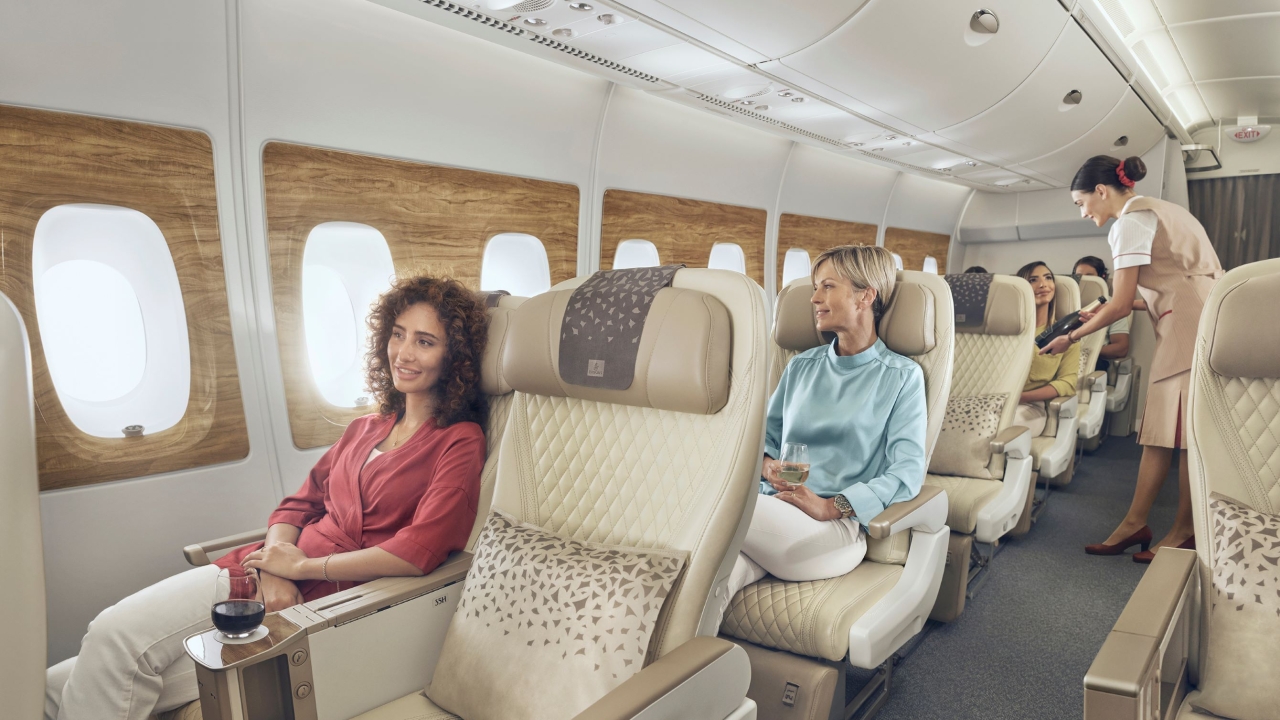APEX: Etihad outlines massive growth plans

The targets were outlined at this week’s Airline Passenger Experience (APEX) conference in Abu Dhabi when Shane O’Hare, Etihad Airways’ Senior Vice-President Marketing said by 2020, the carrier (EY) would employ more than 37,000 staff and fly 32.4 million guests a year to 135 major business and leisure destinations in 185 aircraft.
Targets for the Etihad Group which, with partners Alitalia, Jet Airways, airberlin, NIKI, AirSERBIA, air Seychelles and Etihad Regional, which is pending regulatory approval, currently makes up the world’s 5th largest aviation group, according to O’Hare, are equally ambitious.
By 2020, the group will employ some 79,000 staff, aims to fly 151 million ‘guests’ a year – up 28.6% on current levels - to 615 major business and leisure destinations, which is a rise of 81% on its existing combined network, using 837 aircraft – 201 more than its present total fleet.
O’Hare said the group’s growth strategy is “diversified” and includes “organic growth supported by codeshare partnerships; minority investments in other carriers, deep commercial agreements, global connectivity via Abu Dhabi and the extension of benefits beyond traditional alliances of frequent flyer programmes.”
O’Hare described EY’s partnership programme as “very important” with the benefits including improved networks and schedules with enhanced frequent flier benefits as well as product and services development synergy for guest delivery. “It’s not just a club,” he said, but pointed out “we must deliver even greater synergies and efficiencies.”
The SVP, who delivered the keynote address ‘The Connected Guest Experience – Reimagined’ also revealed EY does not benchmark itself against other carriers looking for inspiration elsewhere. “One of our reference points is the hospitality business we look at what its best industry practice is.”
He said many EY innovations came from the hospitality sector, including Savoy trained butlers in its new A380 ‘Residence’, inflight chefs in first class and ‘Dine Anytime’ in business class.
“It’s about fine dining and choice – we want our guests to be in charge of choice.” And he added: “We would get rid of trollies in economy class if we could and would welcome ideas on this.”
O’Hare said hospitality is part of the airline’s DNA and with its brand mission of ‘delivering the most remarkable travel experience’, the industry could expect it “to do things differently and challenge the status quo.”
“This is what sets us apart from other airlines, forcing broader comparison outside the category of aviation, from where Etihad can seek inspiration and rigorously benchmark its achievements.”
Inflight entertainment and connectivity (IFEC), said O’Hare, plays a key role in EY’s complete guest journey with the airline’s fleet already boasting 100% ‘connected’ aircraft. “Wearable technology will be part of the future but we would like to see, for instance, one app that does everything. From booking to ticketing, from airport way finding, boarding, inflight, transfer, arrival, baggage tracking and departure. It allows closed loop guest relations. That’s where we need to get to and we will be there soon.”
O’Hare said the ‘Connected Crew’ will also be part of the future connected guest experience. Currently EY’s cabin crew are equipped with 1100 iPads, there are 2200 iPad for pilots, 150 iPads in its Abu Dhabi hub for operational information delivery and eight iPad applications for cabin crew, pilot and airport operatives. Future plans include: electronic flight bags for flight deck crew; real-time, on-board cabin reports, real-time credit card transactions for on-board duty free purchases and telemedicine facilities via Wi-Fi for the timely reporting of medical incidents.
The industry, said O’Hare, needs closer integration to deliver embedded inflight. “For instance working with IFEC providers and seat manufacturers on the issue – well that would be nice.”
EY currently operates six IFE systems from two providers – Thales and Panasonic - and has two connectivity solutions providers, Panasonic GCS and On Air. The Panasonic eX3 is specified for its flagship A380n and B787 fleets and EY was the first airline to deploy eX3 on an A380. The airline was also the first to introduce magnetic-jack headsets cabin-wide and install prayer room monitors with unique mecca points and real-time prayer calls.
Within eight years, EY will have one of the world’s largest 787 fleets. Its first Dreamliner went into service on the Abu Dhabi-Dusseldorf route in February, another 70 are on order. Last December the carrier introduced its first Airbus A380 with its game-changing ‘Residence’ product, another four A380s are to be delivered this year leaving six due by mid-2017. “In future, all new aircraft will be equipped with line-fit cabin connectivity,” said O’Hare.
Stay up to date
Subscribe to the free Times Aerospace newsletter and receive the latest content every week. We'll never share your email address.

